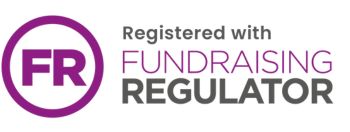The news follows the publication by NICE earlier this year of its own updated head injury guidelines after a public consultation. Headway took an active role in the consultation process and the Guideline Development Group (GDG) has now published its responses to the views expressed by the charity and other interested parties.
The guidelines are an update of Head Injury: Triage, assessment, investigation and early management of head injury in children, young people and adults, first published in 2003 and last updated in 2007. NICE sought the views of various stakeholder groups during a consultation period in autumn 2013 and Headway took the opportunity to raise a number of important issues.
New wording in the guidelines now reinforces the need for high quality written discharge advice for patients leaving an emergency department or observation ward. While pleased with this improvement, Headway felt it important to highlight the disparity in information currently provided across the UK. We informed the GDG of our own survey results in 2010 (which showed that 90% of hospitals failed to meet current NICE guidelines), while also commenting that the majority of units use a template provided by a claims management company. The cards produced in this way feature prominent advertisements for the company.
In response to this, we are pleased to say the GDG included a discussion of the issue in the linking evidence to its discharge advice recommendations. This states that 'the GDG highlighted the inconsistency in information given across the UK and thought that inserting more detail about what should be included...may help this.' It also states the strong belief that accredited printed advice should be used and that 'advertising from commercial organisations such as solicitors, was not appropriate.'
The recommendations have also been amended to include details of support services such as Headway and we thank the group for this important addition. However, the improvements are only useful if they are widely implemented and we sincerely hope this will take place.
Sadly, Headway's suggestions that sexual difficulties are added to the list of possible problems, and that reference should be made to neuropsychologist referral, were not implemented. The GDG believed that these details are dependent on local agreement.
Another vitally important issue raised by Headway was the importance of admission to specialist neuroscience centres for anyone with a brain injury. We cited published evidence for the effectiveness of specialised treatment and were joined on a similar theme by the Faculty of Intensive Care Medicine (FFICM).
The FFICM called for further research recommendations to establish the reasons for variation in outcomes between specialist and non-specialist facilities. The GDG stated in response that some of the research cited fell outside of the inclusion criteria and that other studies have been inconclusive. However, the group also said that determining the issue remains a priority and it recommended further research.
The issue of mandatory testing for hormonal deficiencies remains a controversial and divisive one. Headway commented that the guidelines contain no mention of pituitary dysfunction and that it is vitally important that clinicians are aware of the issue and provide appropriate assessments. We cited examples of units that currently provide follow-up testing at appropriate intervals and have been successful in identifying and treating hormonal problems.
The GDG commented that the issue was outside of the scope of the guideline as it is impossible to diagnose in the acute phase, adding that the condition is more applicable to patients in high dependency or intensive care units. While this may be the case, Headway strongly feels that guidelines do need to be produced on the subject and that large-scale research is needed to fully identify the prevalence of the problem.
We are pleased that the views of Headway and other stakeholders were considered in producing this important update. However, we are disappointed that some of our suggestions were deemed to fall outside the remit. Guidelines dealing with long-term rehabilitation, support and follow-up assessments may go some way to dealing with these issues and we hope this can be addressed in the near future.
Read more about the NICE Head Injury guidance on the NICE website.
Back









